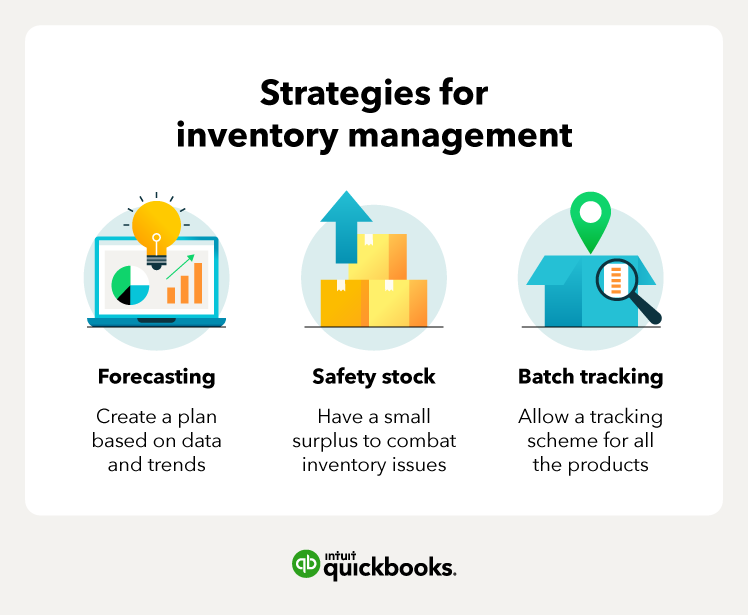Inventory Management Fundamentals Explained
Wiki Article
Inventory Management Fundamentals Explained
Table of ContentsHow Inventory Management can Save You Time, Stress, and Money.The 8-Minute Rule for Inventory ManagementNot known Incorrect Statements About Inventory Management The Definitive Guide for Inventory Management
There are 2 main techniques of monitoring supply: routine and perpetual. The main distinction in between these is just how usually data is updated. Despite just how usually you track stock, you may intend to utilize one of the complying with inventory administration methods: ABC Evaluation, ABC (Always Better Control) Analysis is supply monitoring that separates various things right into 3 classifications based upon rates and also is divided into groups A, B, or C.EOQ Model, Economic Order Quantity is a strategy utilized for preparation as well as getting an order quantity. It involves making a decision relating to the quantity of inventory that need to be put in stock at any given time.
FSN Method, This method of stock control describes the procedure of keeping an eye on all the things of supply that are not made use of frequently or are not required all the time. They are then categorized into three different groups: fast-moving supply, slow-moving inventory, and also non-moving stock. JIT Approach, Just In Time supply control is a process utilized by producers to manage their inventory levels.

The 15-Second Trick For Inventory Management
VED Evaluation, VED is a technique utilized by organizations to manage their supply. It primarily relates to the monitoring of important and also preferable extra components. The high degree of supply that is needed for production normally warrants the low supply for those parts. One of one of the most vital aspects that a company ought to consider is the accuracy of the info offered in its inventory databases.Wrike is a task management remedy that can aid you do exactly that. With Wrike's product administration tools, you can take care of all of your item team's tasks in one place as well as get the most out of every project. Wrike's item launch automation helps speed up item launches with a streamlined approach.


Inventory Management Things To Know Before You Get This
Supply administration describes the process of purchasing, saving, using, and offering a firm's stock. This consists of the management of raw products, parts, as well as completed products, in addition to warehousing and processing of such items. There are different sorts of stock monitoring, each with its advantages and disadvantages, relying on a business's needs.Supply administration tries to successfully streamline inventories to stay clear of both gluts as well as scarcities. 4 major supply monitoring methods consist of just-in-time administration (JIT), materials need preparation (MRP), financial order amount (EOQ), and days sales of stock (DSI). There are benefits and drawbacks to every of the methods, reviewed listed below. A company's inventory is just one of its most beneficial assets.
A lack of supply when and also where it's required can be incredibly detrimental (Inventory Management). At the exact same time, inventory can be thought of as a responsibility (otherwise in a bookkeeping feeling). A large stock lugs the risk of wasting, theft, damages, or shifts sought after. Supply must be insured, and also if it is not offered in time it may have to be disposed of at clearance pricesor merely ruined.
Tiny services will certainly typically keep track of supply manually and establish the reorder factors and also amounts making use of spread sheet (Excel) solutions.
Inventory Management Things To Know Before You Get This
Ideal stock monitoring strategies vary relying on you could try these out the industry. An oil depot has the ability to keep big quantities of inventory for prolonged amount of times, permitting it to wait on demand to grab. While storing oil is expensive and riskya fire in the U.K. in 2005 led to millions of extra pounds in damages as well as finesthere is no threat that the stock will spoil or go out of design.For companies with intricate supply chains and producing procedures, stabilizing the risks of inventory gluts and also scarcities is especially difficult. To achieve these equilibriums, companies have established numerous approaches for supply more info here monitoring, consisting of just-in-time (JIT) and also products need planning (MRP). Some companies, such as financial solutions companies, do not have physical stock and also so must count on solution procedure administration.
Inventory has to be physically counted or measured before it can be placed on an annual report. Companies usually keep sophisticated supply management systems efficient in tracking real-time supply levels. Stock is represented making use of one of three methods: first-in-first-out (FIFO) costing; last-in-first-out (LIFO) setting you back; or weighted-average costing. A supply account commonly includes 4 separate groups: Basic material represent different materials a firm acquisitions for its manufacturing process.
Work in process (also understood as goods-in-process) stands for resources in the procedure of being transformed into a finished product. Completed items are completed products conveniently available available for sale to a company's clients. Product stands for finished items a firm purchases from a supplier for future resale. Depending upon the kind of business or product being analyzed, a firm will certainly More Info make use of different stock monitoring techniques.
Report this wiki page